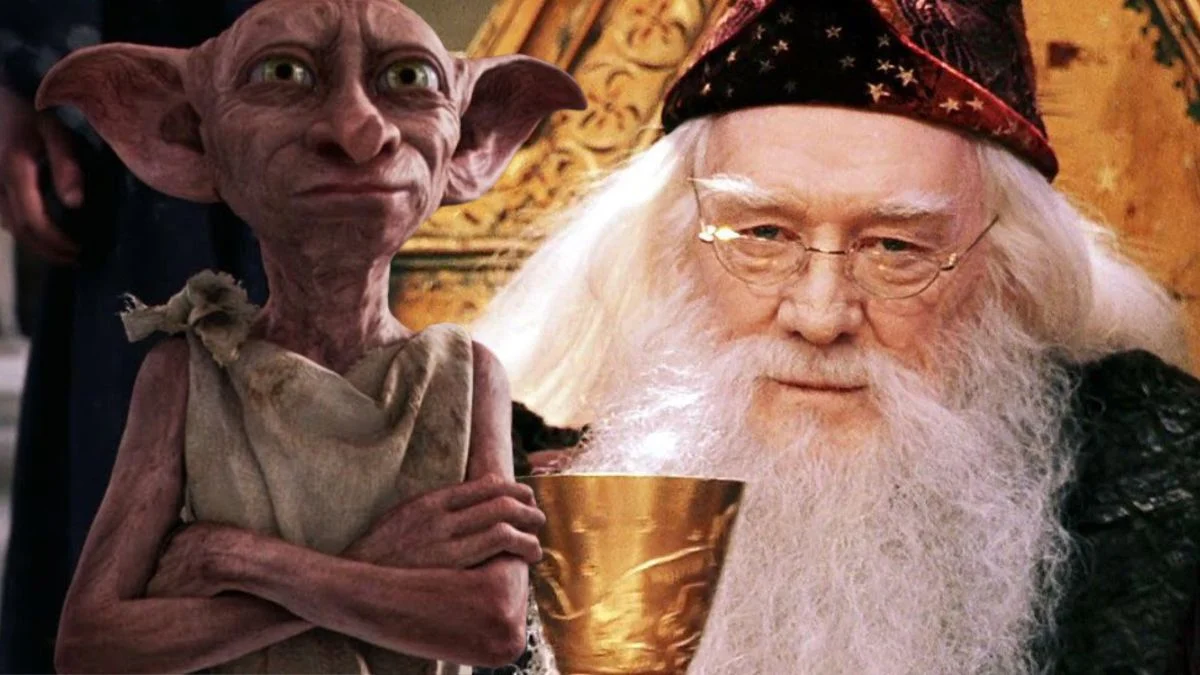
As a huge fan, I’ve always loved how much detail went into ‘Harry Potter and the Chamber of Secrets’! It’s amazing how much you don’t even realize is happening when you first watch it. The second film really upped the ante with new characters, much bigger creatures, and a way more expansive set. What’s really cool is how the crew created so much of it *in camera* – lots of practical effects were built right there on the stages at Leavesden. They did use digital effects too, of course, but mostly to enhance the magic and make things even more believable. It’s a testament to their skill and creativity, and it’s something I really appreciate every time I rewatch! You can find more about the film’s production here.
This list reveals how the team brought to life creatures like house elves, giant spiders, and hissing snakes, and even created a talking letter! You’ll also discover some interesting stories about the making of the film – including details on locations, props, and casting – that influenced the final result. If you love noticing small details, there’s a lot to look out for when you watch the film again.
Dobby Was Performed With On Set Eyeline Rigs Before He Was Added Digitally
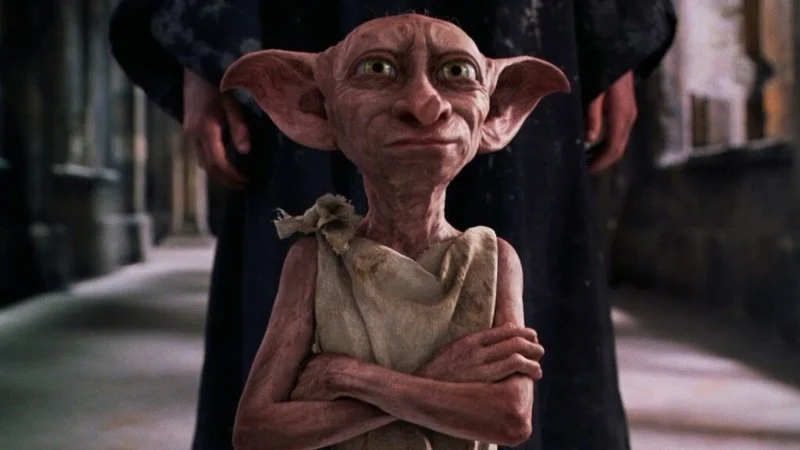
To prepare for the digital character’s appearance in each scene, the filmmakers used eyeline poles and stand-ins. This allowed the actors to focus their attention and gaze in the correct direction. Small visual cues helped actors like Daniel Radcliffe deliver their lines as if the house elf, Dobby, was actually there. Later, the animation team carefully matched Dobby’s movements to those established eyelines, frame by frame, ensuring the dialogue and actor reactions looked perfectly synchronized.
As a fan, I always thought Dobby sounded *perfect*! It was Toby Jones who brought him to life with his voice, and it’s fascinating to learn he actually recorded his lines *after* the scenes were already put together. That meant the animators could really match his words to Dobby’s facial expressions. What I also find incredible is the detail the team put into making him move so realistically. They really studied how things like cloth and skin wrinkle and fold up close, so Dobby’s ears, hands, and clothes all looked natural when he was running around or climbing on things. It’s amazing how much work went into a character like that!
The Flying Ford Anglia Was A Real Car Fleet And One Was Stolen During Production
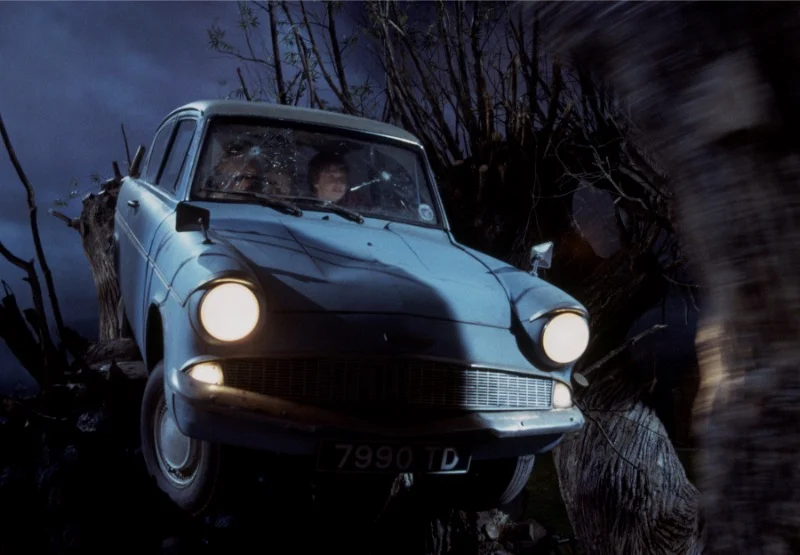
The filmmakers obtained several Ford Anglia 105E vehicles for various purposes. Some were equipped with special frames for cables and stabilizers, allowing the car to tilt and rise. Other cars were used for filming inside the vehicle, with cameras positioned within the interior. For the scene where the car flew through the Whomping Willow’s branches, a lighter body shell was used to ensure the stunt work could be performed safely.
While filming, a car was briefly stolen from where it was being stored, but it was later found after someone reported the theft. The car was repaired and put back into use, allowing the film crew to continue shooting all the scenes needed for the journey to Hogwarts and the crash on school grounds. The different ways the cars were positioned and arranged allowed the crew to easily and quickly film conversations, action sequences, and broad landscape shots.
Aragog Was One Of The Largest Animatronics Built For The Series
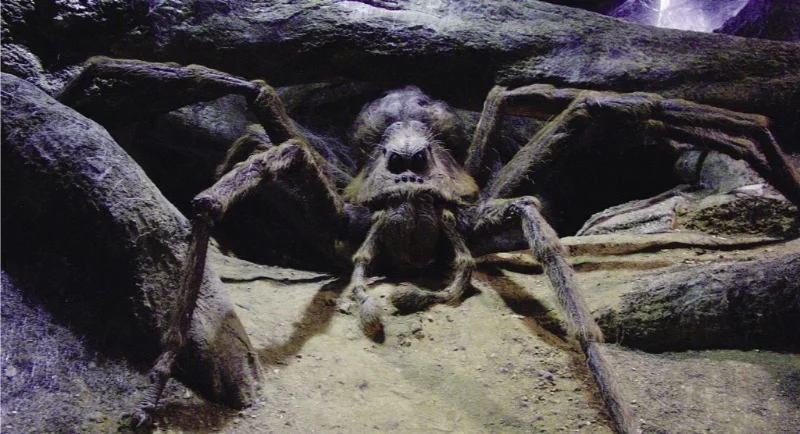
Aragog was brought to life using a full-size animatronic, operated by a team of puppeteers with a system of hydraulics and cables. The creature effects team constructed a strong inner frame to support the weight of its body and positioned the legs to ensure it stood firmly on the forest floor. The head featured separate controls for its mandibles and eyes, allowing for realistic movements during close-up scenes and dialogue.
To ensure the puppet looked good under the bright lights of the Forbidden Forest set, hair and texture were added in stages. The team chose bendable materials for the joints, allowing the spider’s legs to move realistically as it shifted its weight. Although digital effects created the large group of smaller spiders surrounding Aragog, the close-up shots featured the physical puppet to maintain a consistent visual style.
Shirley Henderson Played Moaning Myrtle While In Her Thirties
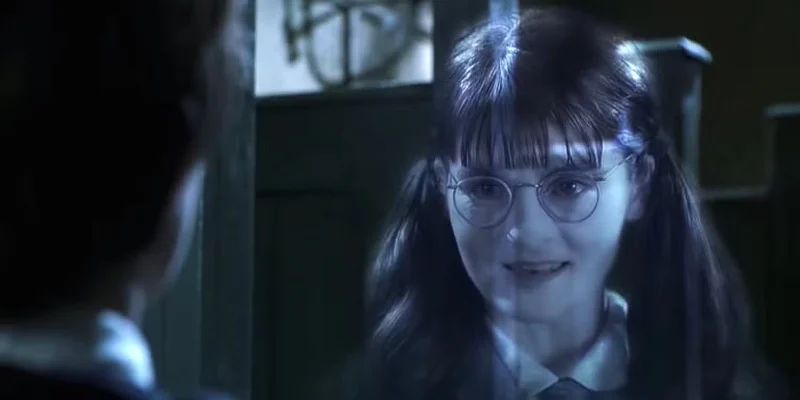
Myrtle the ghost was played by Shirley Henderson, who was in her thirties when the movie was filmed. Henderson’s voice work heavily influenced how the character sounded and spoke, and those choices helped determine the timing of the watery effects in the bathroom scenes. She also filmed on set using wires and specific markers, allowing visual effects artists to add her ghostly appearance later.
The girls’ bathroom where Myrtle haunts was completely built from scratch, including functional plumbing for special effects. Sinks, mirrors, and tiled walls were all constructed to allow for controlled flooding and splashing without harming the set. The faucet featuring the snake symbol had a secret mechanism, allowing it to turn and reveal the entrance to the chamber when needed.
The Basilisk Combined A Massive Practical Head With Digital Body Shots
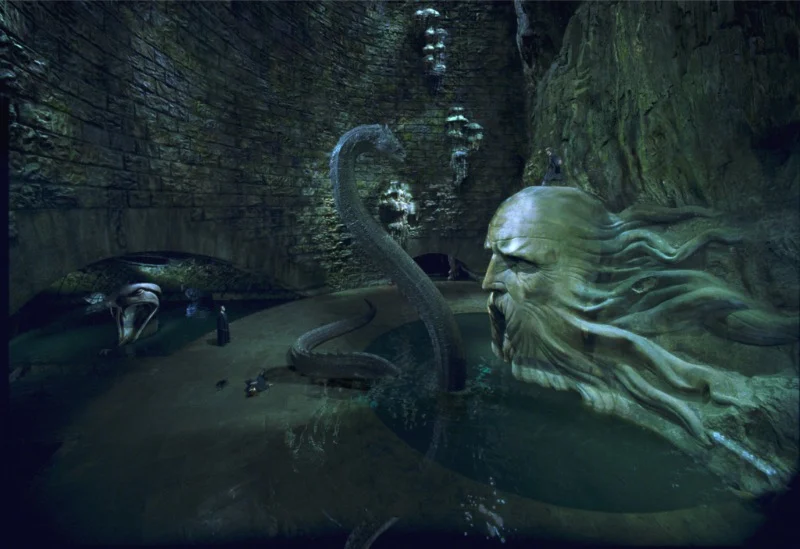
For filming, the crew created a massive basilisk head and neck, allowing the actors to physically touch and fight against realistic scales and teeth. The creature’s skin was made from silicone pieces, each with intricate scale patterns carefully cut by hand, and its eyes were mechanically operated to open and close, creating the effect of its deadly stare. The head was placed on a moving platform, enabling quick, powerful movements during the fight scene with Harry.
To show the basilisk moving through tunnels and scaling the statue, visual effects artists used digital animation to make its body appear longer. The art department also crafted pieces of shed skin to decorate the sets in the pipe chambers. These set pieces helped determine how the camera moved and provided the visual effects team with specific points to follow when showing the serpent’s entire length.
The Howler In The Great Hall Was A Practical Puppet Enhanced Later
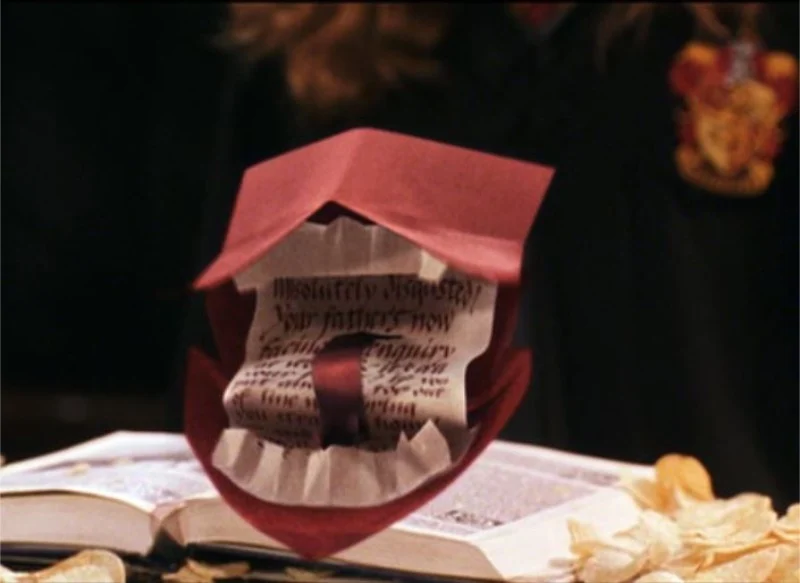
As a huge fan, I always find the little details in filmmaking fascinating! When Ron gets that Howler at breakfast, it wasn’t just special effects – it was a really clever piece of practical puppetry. The envelope itself was mechanical; it would open and snap shut when the crew wanted it to. Servos inside pulled strings to make the mouth move, and a pre-recorded audio track delivered the shouting message. What I find especially impressive is how carefully the table setting and camera angles were planned. It allowed the puppeteers to stay hidden just outside the shot and control everything perfectly on cue. It’s a great example of how they blended practical effects with sound to create something really memorable!
I was really impressed with how they handled the lip sync in this film. Whenever a character’s mouth didn’t *quite* match the dialogue, the effects team didn’t just replace it with CGI. Instead, they carefully cleaned up the existing footage and added very subtle digital enhancements to the paper’s mouth shape. This was a brilliant move because it maintained the authentic look and feel of the real parchment, even under bright studio lights. And get this – they didn’t even have to worry about removing little details like crumbs or steam from breakfast! They just left them in the shot, saving a ton of time and effort on complicated visual effects simulations. It’s a testament to how cleverly they approached the problem, and it really adds to the film’s realistic feel.
Mandrake Roots Were Animatronic Babies Pulled From Real Set Planters
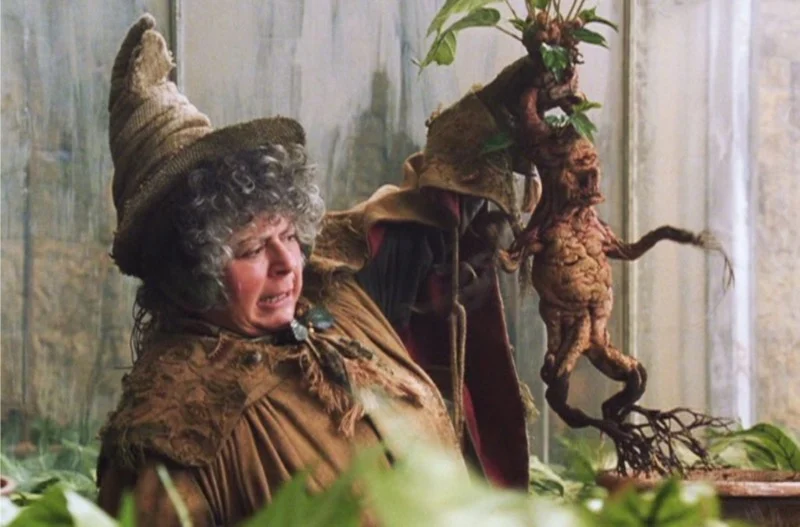
For the greenhouse scenes, they used plant pots filled with special soil mixes that were easy to clean and allowed for multiple retakes. Each pot contained a robotic Mandrake plant with a gripping mechanism, enabling it to shake and move realistically when pulled. The props team created various versions of the plant at different stages of development, so the scene could depict a whole classroom of plants within a single day of filming. This ensured visual consistency and efficient shooting.
As a critic, I was really impressed with the attention to detail on set. The actors weren’t just *acting* – they were comfortable, thanks to these cleverly designed earmuffs with sound deadening inserts. It allowed for truly natural reactions without sacrificing their hearing. And the set itself? Forget a simple backdrop! They constructed a fully functional greenhouse, complete with glass panes, climbing vines, and even a misting system for the cameras. This wasn’t just for show; it meant the crew had complete freedom of movement, and we got these gorgeous, natural reflections on the glass during filming. It really added to the immersive feel of the movie. You could tell it was a working environment, not just a stage.
Key Hogwarts Interiors Came From Lacock Abbey And Gloucester Cathedral
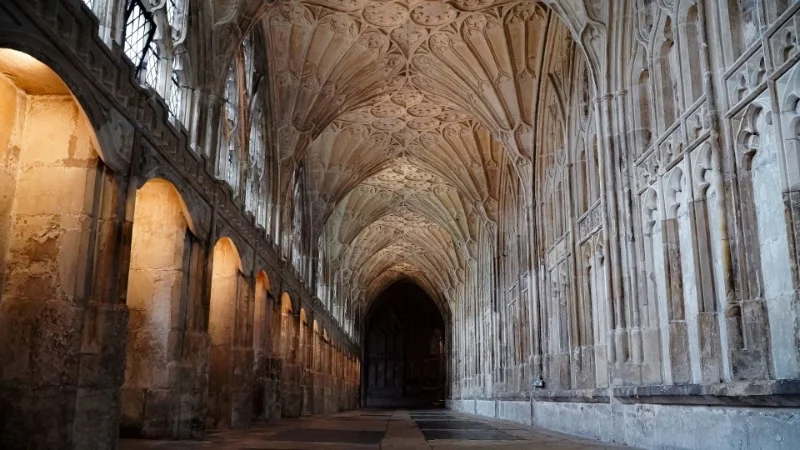
To create a larger Hogwarts for the second film, filming went back to real-world locations. Lacock Abbey served as the setting for many rooms and hallways, which were then transformed into classrooms – including the area where Professor Snape taught potions. The abbey’s stone floors and arched ceilings added a realistic feel to the sets, blending well with what was constructed at Leavesden Studios, and making the shifts between filming locations appear smooth and natural.
Gloucester Cathedral was used to film scenes set in corridors, where messages seemed to appear on the walls. The film crew put up temporary set pieces to keep the historic walls safe and used special red paint that wouldn’t leave any marks during cleanup. They set up the lighting to look like natural sunlight shining through the cloisters, and made sure it stayed consistent over several days of filming.
Richard Harris Delivered His Final Dumbledore Performance In This Film
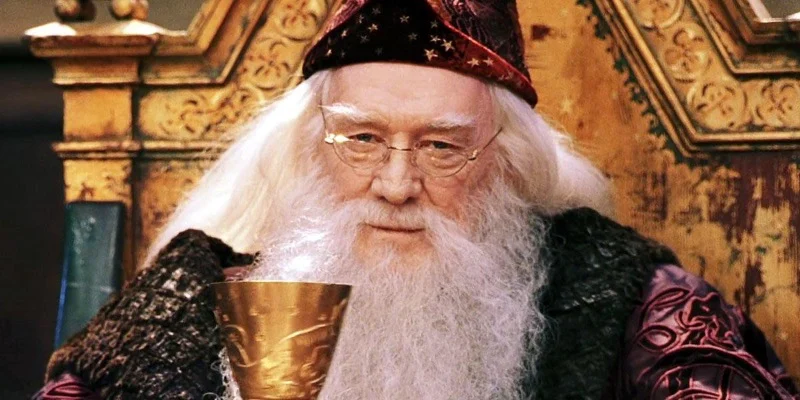
As a big fan, it was really touching to see Richard Harris finish his work as Albus Dumbledore during the making of the second film. He appears in some key scenes – like when he’s visiting folks in the hospital wing, and during the year-end celebration in the Great Hall. The filmmakers were incredibly thoughtful, making sure they captured plenty of dialogue and different camera angles. They really wanted to give the editors everything they needed to nail those important story moments that wrap up the school year. It was all about ensuring we had everything to properly honor his performance and the end of the term.
Following the first film, a different actor took on the role of Dumbledore in the subsequent movies. To ensure the character looked consistent, the costume and makeup were modified – things like his robes, beard, and accessories were carefully adjusted. The filmmakers also kept the same office set, including the phoenix perch, memory cabinet, and telescope, to maintain visual continuity throughout the series.
Tom Riddle’s Anagram Was Localized With Different Names And New Props
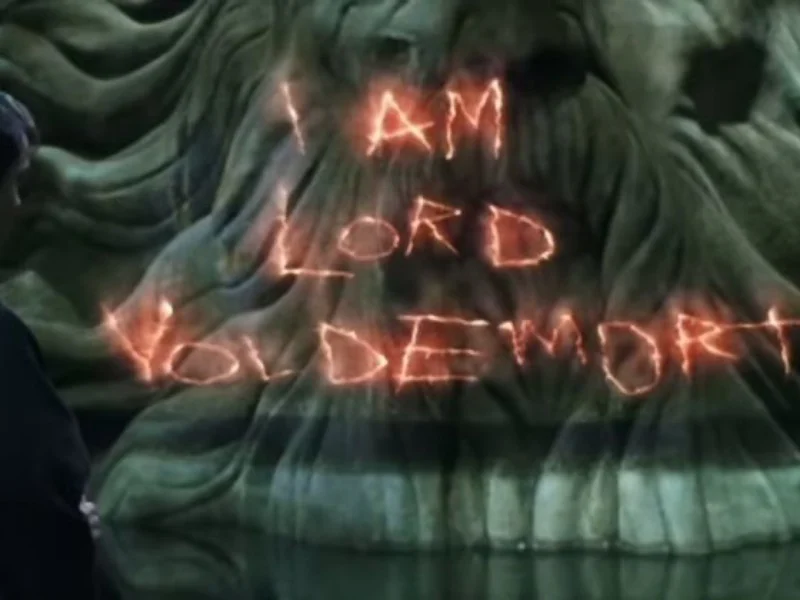
When written backwards, the name Tom Marvolo Riddle becomes I am Lord Voldemort in English. To achieve this same effect in other languages, different middle names were necessary. The art department created alternative versions of diary pages and classroom writing slates to correspond with each language, ensuring the reveal worked visually on screen without altering the meaning through subtitles.
Dubbing teams carefully recorded each language, making sure the dialogue matched the actors’ lip movements as precisely as possible. When the character’s name appeared on screen, the crew created artwork with the letters rearranged to form the correct anagram in each language. This detailed preparation ensured the reveal worked effectively for viewers around the world, all while maintaining the scene’s visual consistency.
Tell us in the comments what your favorite subtle detail from the movie was, and which scene took you by surprise. We’d love to hear what stood out to you!
Read More
- DOGE PREDICTION. DOGE cryptocurrency
- Calvin Harris Announces India Debut With 2 Shows Across Mumbai and Bangalore in November: How to Attend
- EQT Earnings: Strong Production
- Docusign’s Theatrical Ascent Amidst Market Farce
- The Relentless Ascent of Broadcom Stock: Why It’s Not Too Late to Jump In
- TON PREDICTION. TON cryptocurrency
- Ultraman Live Stage Show: Kaiju Battles and LED Effects Coming to America This Fall
- HBO Boss Discusses the Possibility of THE PENGUIN Season 2
- Why Rocket Lab Stock Skyrocketed Last Week
- The Dividend Maze: VYM and HDV in a Labyrinth of Yield and Diversification
2025-10-05 08:47